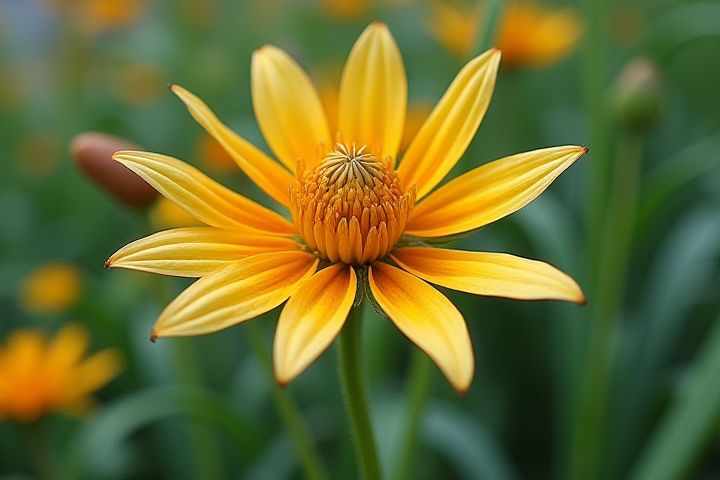
Selecting plants for your house garden involves considering your local climate, sunlight availability, and personal aesthetic preferences. For sunny areas, vibrant annuals like petunias and geraniums thrive, providing a burst of color throughout the season. In shaded spots, hostas and ferns flourish, adding texture and greenery without the need for direct sunlight. For those looking to grow herbs, basil, mint, and rosemary can be excellent choices, enhancing both your garden and culinary endeavors. Incorporating native plants can promote biodiversity, attract pollinators, and minimize water usage, creating a sustainable and thriving garden ecosystem.
What Plants Suit A House Garden
Light requirements
In a house garden, selecting plants based on their light requirements is crucial for thriving growth. For full sun conditions, consider hardy options like Lavender (require 6-8 hours of sunlight daily) and Agave (thrives in bright, direct light). If your garden has partial shade, hostas and ferns are excellent choices, as they flourish with 3-6 hours of indirect sunlight. For low-light areas, opt for Snake Plant and Pothos, which can survive on as little as 2 hours of natural light per day while maintaining their vibrant appearance.
Soil type compatibility
When selecting plants for your house garden, it's crucial to consider soil type compatibility. For well-drained sandy soil, consider planting succulents such as Agave or Sedum, which thrive on low moisture. If your soil is heavy clay, plants like Crape Myrtle or Daylilies can establish well due to their adaptability to moisture-retentive conditions. For loamy soil, vibrant options include vegetable varieties like Tomatoes or herbs like Basil, which benefit from balanced nutrient availability.
Watering needs
Selecting plants for your house garden requires an understanding of their watering needs. Low-maintenance succulents, such as Aloe Vera and Echeveria, thrive in well-draining soil and require watering only every two to three weeks. Conversely, moisture-loving plants like ferns and peace lilies prefer consistently damp soil, necessitating watering at least once a week. When planning your garden layout, consider grouping plants with similar watering requirements to simplify care and ensure optimal growth.
Growth size and space
When selecting plants for a house garden, consider their growth size and the available space to ensure optimal health and aesthetics. For compact spaces, plants like dwarf fruit trees, such as 'Tropic Snow' peach, can thrive in pots while providing delicious yields. If you have more room, consider larger options like the 'Sunburst' Honeylocust, which grows up to 30 feet tall, providing ample shade and visual appeal. Lastly, herbs like basil or rosemary require minimal space and can grow well in containers while enhancing your cooking with fresh flavors.
Climate adaptation
When selecting plants for your house garden with a focus on climate adaptation, consider drought-tolerant varieties such as succulents, lavender, and ornamental grasses. Native plants like coneflowers and black-eyed Susans thrive in local conditions, requiring less water and maintenance. Incorporating deep-rooted species, such as oak trees or native shrubs, helps improve soil health and enhances resilience against extreme weather. Opting for ground covers like creeping thyme can provide erosion control while minimizing water usage, making your garden sustainable and climate-resilient.
Pest resistance
When creating a house garden with a focus on pest resistance, consider planting marigolds, known for their ability to deter nematodes and aphids with their natural oils. Lavender offers both a fragrant addition to your garden and acts as a deterrent to pests such as mosquitoes and moths. Additionally, rosemary is a resilient herb that not only enhances culinary dishes but also repels a variety of insects like beetles and flies. Incorporating these plants can significantly reduce the need for chemical pesticides, promoting a healthier garden environment.
Maintenance level
For low-maintenance house gardens, consider succulents like aloe vera and jade plants, which require minimal watering and can thrive in a variety of light conditions. Lavender is another excellent choice, providing fragrant blooms with little effort; it flourishes in well-drained soil and needs watering only once established. Ornamental grasses, such as feather reed grass, are hardy and resilient, requiring no additional attention once rooted. If you prefer flowering options, daylilies offer vibrant colors and can endure drought periods, needing only annual pruning to maintain their beauty.
Toxicity to pets
When selecting plants for your home garden, prioritize non-toxic varieties to ensure the safety of your pets. Consider options like the spider plant (Chlorophytum comosum), which is not only safe but also purifies the air. The Boston fern (Nephrolepis exaltata) and bamboo palm (Chamaedorea seifrizii) are also pet-friendly choices that can enhance the aesthetic of your space. Avoid popular yet toxic plants like philodendron, peace lilies, and azaleas to protect your furry companions from potential harm.
Pollinator attraction
To enhance your house garden's appeal to pollinators, consider incorporating native flowers such as Echinacea purpurea (purple coneflower) and Rudbeckia hirta (black-eyed Susan), which bloom from midsummer to fall. Add fragrant herbs like Lavandula angustifolia (English lavender) and Salvia officinalis (common sage), both known for attracting bees and butterflies. With a diverse planting scheme, aim for a variety of colors and bloom times to provide a consistent food source throughout the growing season. Planting in clusters can also increase visibility and accessibility for pollinators, ensuring a thriving and vibrant garden environment.
Seasonal changes in appearance
In a house garden, consider incorporating perennials such as Helenium and Rudbeckia, which bloom vibrantly in late summer and showcase vivid yellow and orange hues. For spring, Tulips and Daffodils provide a stunning display with their diverse colors that emerge as the weather warms. During the fall, ornamental grasses like Miscanthus and Panicum not only add texture but also create movement as their foliage turns to warm bronze and gold. In winter, evergreens like Boxwood maintain structure and greenery, ensuring your garden remains visually appealing year-round.
